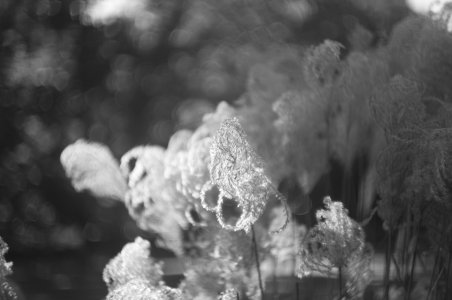Summilux v2- take a Voigtlander Ultron design, split the rear element into a doublet, each element of it lesser power.
Most of the classic lenses fall into a couple of families of designs, The specific glass, curvatures, spacing, and fabrication used to implement a lens are more important to defining its unique character.
for the LLL lens- it does an adequate job of recreating a cult lens that now cost a ridiculous amount of money, at 5% of the cost of an original- makes a lot more sense for someone that wants to actually use one.
Most of the classic lenses fall into a couple of families of designs, The specific glass, curvatures, spacing, and fabrication used to implement a lens are more important to defining its unique character.
for the LLL lens- it does an adequate job of recreating a cult lens that now cost a ridiculous amount of money, at 5% of the cost of an original- makes a lot more sense for someone that wants to actually use one.
Ororaro
Well-known
Summilux V1, summarit, show no difference.
Their actual poetic power, image character, is tremendous and unique.
I always pick the V1/summarit and sonnar f1.5 over any V2/asph exactly because the V1/summarit/sonnar give an image I love.
And I know the design is genuine.
Their actual poetic power, image character, is tremendous and unique.
I always pick the V1/summarit and sonnar f1.5 over any V2/asph exactly because the V1/summarit/sonnar give an image I love.
And I know the design is genuine.
I suspect that LLL is producing this version of the 1966 50/1.2 lens more for its artistic look, rather than absolute optical performance.
The thing about character of a lens: some people will love it, others hate it. The "Summarit Swirlies" are a byproduct of residual astigmatism and characteristic of a double-Gauss type lens with very high flatness of field. Other implementations of a Double-Gauss fold in some field curvature to reduce astigmatism. Sonnar have high field curvature, little astigmatism, lots of coma. Optimize a Summarit for close-up/wide-open use, compare with a Sonnar, very different look.
It is difficult to find a 5cm F1.5 Xenon, Summarit, or 5cm F2 Sonnar with perfect glass. Soft glass used for the front element. The bad reputation of the Summarit- internal haze building up on the surfaces on each side of the Aperture, soft coatings and glass, and not optimized for wide-open use.
Is buying the LLL reproduction any different from buying a Jupiter-3? You pay almost as much for a really good KMZ version 1 J-3 in LTM these days as you would a Zeiss Sonnar. The optics are as good as a wartime Sonnar, used the same glass, and same formula. The KMZ LTM focus mount is better than the original Zeiss LTM mount. The production quality on the KMZ v1 is better than the wartime Sonnar.
The thing about character of a lens: some people will love it, others hate it. The "Summarit Swirlies" are a byproduct of residual astigmatism and characteristic of a double-Gauss type lens with very high flatness of field. Other implementations of a Double-Gauss fold in some field curvature to reduce astigmatism. Sonnar have high field curvature, little astigmatism, lots of coma. Optimize a Summarit for close-up/wide-open use, compare with a Sonnar, very different look.
It is difficult to find a 5cm F1.5 Xenon, Summarit, or 5cm F2 Sonnar with perfect glass. Soft glass used for the front element. The bad reputation of the Summarit- internal haze building up on the surfaces on each side of the Aperture, soft coatings and glass, and not optimized for wide-open use.
Is buying the LLL reproduction any different from buying a Jupiter-3? You pay almost as much for a really good KMZ version 1 J-3 in LTM these days as you would a Zeiss Sonnar. The optics are as good as a wartime Sonnar, used the same glass, and same formula. The KMZ LTM focus mount is better than the original Zeiss LTM mount. The production quality on the KMZ v1 is better than the wartime Sonnar.
Last edited:
raid
Dad Photographer
I have a Summitar. Are there certain ranges of serial numbers where a Summarit is somehow better than the rest of the produced lot of such lenses? I use it sparingly. Maybe my copy is "basic"?I like the Summarit- the optical formula is revised from the Xenon, I seem to remember the 4th element has a different curvature.
The Xenon is optimized for F1.5 from close-up to infinity. A Hex shaped aperture is used to reduce the effects of spherical aberration on focus shift.
The Summarit is a 51.1mm lens, at least the 5 that I took apart were all scribed 51.1. The Summarit is optimized for ~F2 close up, front-focuses at F1.5, and is in focus using F1.5 at infinity. Their way of dealing with focus shift. After all- who is crazy enough to use a lens wide-open and close-up. If you are, just use a shim under the rear groups to move them back slightly. This increases the focal length and reduces the distance between the image plane and lens, optimizes for close-up and wide-open, good enough for infinity. About 0.08mm. A Shim from a J-8 works.
The 50/1 Noctilux and 50/1.1 Nokton are closer to the Ultron design, the rear element of an Ultron design split into two of lesser power. Similar to the Xenon/Summarit compared to the Opic: rear element split into two of lesser power.
-------------------------------------------------------------------
Brian said: "It is difficult to find a 5cm F1.5 Xenon, Summarit, or 5cm F2 Sonnar with perfect glass. Soft glass used for the front element. The bad reputation of the Summarit- internal haze building up on the surfaces on each side of the Aperture, soft coatings and glass, and not optimized for wide-open use."
There is always sample-to-sample variation. All of the Summarits were coated. I can speculate that those built later benefitted from production after the war becoming better. But- I've had Summarits from the 1.0M range through to 1.4M range. The later one: perfect glass, perfect coating. Mint condition. I think it led a charmed life. It required cleaning internal haze when I got it. Probably never opened: to take the barrel out of the mount, you need to uncap a port and stick a rod through it to allow unscrewing the barrel. I used a screwdriver: it broke. Needed a much thicker rod, and lots of force to unscrew it.
Last edited:
Ororaro
Well-known
My 3 mint Summarit copies are all exactly the same perfirming as a summilux V1.
Never saw any swirl… sharp wide open with lotsa meat around the bone, pastel colors just as with the VENERABLE summicron 35mm V1.
Never saw any swirl… sharp wide open with lotsa meat around the bone, pastel colors just as with the VENERABLE summicron 35mm V1.
raid
Dad Photographer
I will dig out my Summarit, and I will use it again. I have a Summicron V1 35/2 and a Summilux V2 35/1.4, but no other Summilux.
Erik van Straten
Mentor
raid
Dad Photographer
Is it your steel rim 50/1.4 Summilux pre-asph?
From over 20 years ago, Summarit 5cm F1.5 wide-open, just after cleaning.
The Summarit is lower contrast, but -to me- has an amazing tonal range on B&W film and on monochrome digital. I cleaned this same lens not long ago, seems every 15 to 20 years you need to take it apart. I use it on the M Monochrom with an Orange filter.

If you never use the Summarit wide-open and close-up, with a background at 10ft and more- may not see the Summarit Swirlies. More pronounced that Summitar Swirlies.
The Summarit is lower contrast, but -to me- has an amazing tonal range on B&W film and on monochrome digital. I cleaned this same lens not long ago, seems every 15 to 20 years you need to take it apart. I use it on the M Monochrom with an Orange filter.

If you never use the Summarit wide-open and close-up, with a background at 10ft and more- may not see the Summarit Swirlies. More pronounced that Summitar Swirlies.
Dan Chang
Established
Totally give up made in China is mission impossible in this world economy. We should not see the world either black or white or with me or you are the enemy. Some Chinese lens at price and offered are good value and reasonable quality, such as 50mm f1.1 and 28mmf5.6Who said “by Leitz”?
Taylor Hobson, Zeiss, the true originators
Anyone into collecting and acknowledging optics mastery will recognize T&H, Zeiss, as true pioneers and must-haves.
No chinese 7LLL salads.
I’m not sure what you are trying to prove…
Erik van Straten
Mentor
No steel rim. It is a 50mm f1.4 lens. But wich one? The picture is made with an MP.Is it your steel rim 50/1.4 Summilux pre-asph?
raid
Dad Photographer
I don't know. The portrait is very sharp.No steel rim. It is a 50mm f1.4 lens. But wich one? The picture is made with an MP.
Erik van Straten
Mentor
Yes, but usually 50mm f1.4 lenses aren't sharp fully open and aren't ultra sharp at 1m.I don't know. The portrait is very sharp.
raid
Dad Photographer
Is it a made in China lens?
sojournerphoto
Mentor
Now I’m watching - I like the rendering very muchNo steel rim. It is a 50mm f1.4 lens. But wich one? The picture is made with an MP.
sojournerphoto
Mentor
TTArtisan 50mm f1.5 Asph?Is it a made in China lens?
raid
Dad Photographer
We just guess here! Maybe so. Erik will let us know.TTArtisan 50mm f1.5 Asph?
Erik van Straten
Mentor
No. I will tell what lens it is.Is it a made in China lens?
It is a black paint 50mm f1.4 Summilux lens from 1959 with serial number 1703XXX. The diaphragm has 12 slats. The focusing ring has ridges on the lower surfaces.
I've never seen a better lens in my life.
The coating is bright orange. Not a single scratch can be seen.
Last edited:
Share:
-
This site uses cookies to help personalise content, tailor your experience and to keep you logged in if you register.
By continuing to use this site, you are consenting to our use of cookies.



